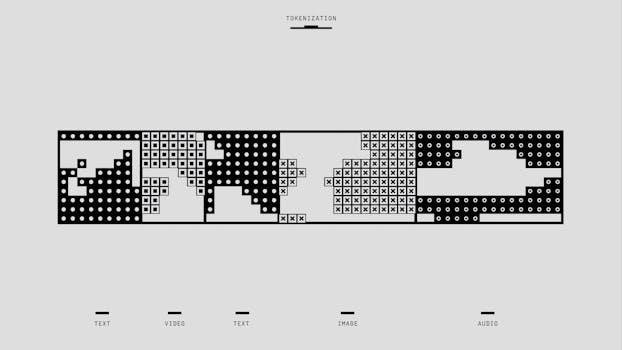
Understanding Lippert Leveling System Error Codes
Lippert leveling systems utilize a control panel display to communicate issues through error codes and messages. These codes indicate problems within the system, such as jack malfunctions or voltage issues. Understanding these codes is crucial for proper troubleshooting and maintaining the system’s functionality. The display alerts you to what is wrong with the system.
Common Error Code Causes
Several factors can trigger error codes in Lippert leveling systems. One prevalent cause is low voltage, as these systems are particularly sensitive to voltage fluctuations. When the voltage drops below approximately 12 volts, it can lead to various error messages appearing on the control panel. Another common cause is related to issues with the individual jacks themselves. These issues can range from a jack being unable to fully extend or retract, to a problem with the jack sensor. Additionally, environmental factors can play a role, as error codes may arise after a period of inactivity, particularly if the system has not been used for several months. Furthermore, problems such as a stuck stabilizer can contribute to error codes. The auto-leveling system’s pickiness regarding voltage is a critical factor. Improper connections or faulty wiring can also contribute to error codes. Finally, extended time without use and extreme temperatures can impact the system, leading to error codes. Remember, error codes are often a symptom of an underlying issue that needs further investigation. Physical obstructions that prevent the jacks from moving can also be the reason for the error codes.

Clearing Error Codes⁚ Initial Steps

When encountering a Lippert leveling system error code, there are several initial steps to attempt before seeking professional assistance. The first recommended action is to extend all of the jacks to their maximum extension of at least six inches and then fully retract them. This process often clears the error code. If this first step fails to resolve the error, the next step is to completely disconnect all the system’s connectors. This action cuts power to the system, allowing it to fully reset. It’s essential to wait approximately 15 minutes before reconnecting all the connectors. Once the power is restored, you should try the extend/retract procedure again. If the error reappears after these initial steps, further investigation is needed. Be sure to check the battery voltage, as the system is very sensitive to low voltage. Ensuring the RV is on a stable and level surface is also important. Sometimes these initial steps are not enough and further troubleshooting is required. Make sure all connections are clean and secure when reconnecting.
“RR JACK” Error and Resolution
The “RR JACK” error on a Lippert leveling system indicates an issue with the rear right jack. This error often leads to a system shutdown and can be frustrating for RV owners. Initially, it might be mistaken for a Hall error, which is a more serious problem. However, in many cases, the error can be resolved by following a specific procedure. To clear the “RR JACK” error, extend all jacks to reach a minimum of six inches, then fully retract them. This action often clears the code. This process is outlined in Lippert’s documentation. If the error persists, disconnecting power for 15 minutes and then repeating the extend and retract procedure is the next recommended step. This complete power down can reset the system and resolve the error. It’s also important to ensure the area around the jack is clear and there are no obstructions. If these basic steps don’t clear the code, further troubleshooting or professional help may be needed, potentially indicating a more serious sensor or component failure. Remember to consult your Lippert manual for specific guidance.
“LF JACK” Error Troubleshooting
An “LF JACK” error on a Lippert leveling system signifies a problem with the left front jack. This error often presents itself when the system attempts to extend the jacks. RV owners may hear the system attempting to extend, but then it shuts off, displaying the “LF JACK” error. This typically indicates the jack is having trouble extending or retracting properly. Initial troubleshooting steps should include visually inspecting the area around the jack for any obstructions or debris. Ensure there are no bent components or anything hindering the jack’s movement. If the error continues, try extending all the jacks at least six inches, then retract them fully. This procedure, often recommended by Lippert, can sometimes clear the error by resetting the system. If these basic steps don’t work, disconnecting the system’s power for about 15 minutes and then reconnecting it may be necessary to fully reset the system. If the issue persists after these actions, further investigation by a qualified RV technician might be needed. The error could stem from a sensor issue or a more complex mechanical problem with the jack itself.
The Role of Voltage in Error Codes
Voltage plays a critical role in the operation of Lippert leveling systems, and inadequate voltage is a common cause of error codes. These systems are quite sensitive to voltage fluctuations, and if the voltage drops below approximately 12 volts, various error codes may appear. This is a frequent issue when the RV’s battery is low or the power source is weak. The auto-leveling system relies on a consistent power supply to function correctly; therefore, insufficient voltage can cause the system to misinterpret signals, resulting in errors. Low voltage can cause the system to exhibit erratic behavior, such as retracting jacks inconsistently or failing to level. It’s crucial to ensure that your RV’s battery is fully charged and in good condition before using the leveling system. If the error occurs, verify the voltage using a voltmeter to ensure the system is receiving adequate power. Addressing voltage issues early can prevent many common Lippert system error codes and ensure smooth operation. In addition to checking the battery, inspect all connections for corrosion or damage, as these issues can contribute to voltage drops.
Error Codes After Extended Inactivity
Lippert leveling systems can sometimes display error codes after periods of extended inactivity. This is often observed after an RV has been parked in one location for several months. The inactivity can cause various components to become less responsive, leading to error messages when the system is next activated. For example, the system may display an error code and emit an audible beeping sound. These error codes can occur even if the power system was in good condition prior to the period of inactivity, such as after four months of being stationary. Furthermore, simply pushing the enter button to acknowledge the error might not resolve the issue, as the underlying problem may require further investigation. Such error codes often signify that the leveling system is having trouble calibrating itself or that individual components have not been exercised for some time. It’s also important to consider that extended periods of inactivity can lead to decreased battery health, which further contributes to the appearance of error codes upon startup. In such cases, the system may seem completely unresponsive, and standard reset procedures might fail.
Error Codes and Stabilizer Issues
Lippert leveling systems can sometimes display error messages related to stabilizers. These messages may indicate a problem with the system’s ability to properly engage or disengage the stabilizers. Specifically, an error message might appear on the control panel, stating to “check stabilizer”. Such messages suggest that the system is detecting an issue with the stabilizer mechanism, but specific instructions to resolve this are not always included in the system’s manual, and this can be frustrating. These error messages can occur whether or not the system was recently used. In some situations, the system may simply flash a warning and display the message, without providing a clear path to troubleshooting, which can be particularly difficult. The issue is not always a mechanical failure; it can also result from electrical problems affecting the stabilizer’s operation. Rebooting the system or disconnecting the power may not always resolve the issue and may require a more in-depth approach to diagnose what is causing the error message. The message can occur even if the system was working correctly previously, and can be difficult to troubleshoot.
“Retract Timed Out” Error
The “Retract Timed Out” error on a Lippert leveling system indicates that the system has exceeded its allotted time to retract the jacks during an auto-leveling or retract cycle. This error typically occurs when the jacks fail to fully retract within a predetermined time frame, usually around 90 seconds. It often appears as “return for service ERROR retract timed out” on the control panel. This message can be accompanied by a beeping sound, signaling that the system is experiencing an issue. This error can often be triggered by a bad camp spot, where the jacks are not able to fully retract due to the uneven terrain. The problem could also lie in a mechanical issue, where the jacks encounter resistance. The “Retract Timed Out” error is not always easy to resolve and may require a variety of troubleshooting steps. Additionally, the error can sometimes persist even after rebooting the system, and may require professional attention in order to resolve the issue effectively. It can result in the system being unusable until resolved. The error is very common.

Lippert Error Code Documentation (TI-177)
Lippert provides a Technical Information (TI) sheet, specifically TI-177, which serves as a crucial resource for understanding the various error codes generated by their leveling systems. This document is a comprehensive guide that outlines the specific error codes, their meanings, and potential troubleshooting steps. The TI-177 documentation is a valuable resource for RV owners and technicians alike, providing detailed insights into the error messages displayed on the Lippert control panel. It typically includes a list of error codes, descriptions of what each code signifies, and suggested actions to address the problem; This documentation is essential for correctly diagnosing issues and implementing the necessary solutions. It can often be found online, or provided by the retailer from whom you purchased the RV. The document is indispensable for understanding error codes. This document should be used as a first step in troubleshooting errors. In many cases, it is the key to a successful repair. The TI-177 document is vital for anyone dealing with Lippert leveling systems.
Lippert System’s Touchpad Display
The Lippert leveling system’s touchpad display is a vital component, serving as the primary interface for interacting with and monitoring the system. This display is not just for input; it also provides crucial feedback through error messages and system status indicators. The touchpad display is designed to be user-friendly, presenting information in a clear and concise manner, enabling users to easily understand the current status of the leveling system and any potential issues. When an error occurs, the display will show specific error codes, helping users quickly identify the problem. Additionally, the display can provide information on the system’s operational status, such as which jacks are extended or retracted. This feedback is critical for the safe and efficient use of the leveling system. The clear display can help you know what the problem is. The touchpad display makes it simple to understand the status of the system. The display is vital for troubleshooting. Without it, it would be much harder to use the system. The display is a key component of the Lippert system.
When to Seek Professional Help
While many Lippert leveling system issues can be resolved with basic troubleshooting, there are instances when professional help becomes necessary. If initial steps, such as extending and retracting jacks or disconnecting power, fail to clear error codes, it might be time to consult an RV technician. Persistent error messages, especially those related to internal system malfunctions or hydraulic failures, often require specialized knowledge and tools to diagnose and repair. Also, if you encounter a “Retract Timed Out” error, which might indicate more complex issues, it’s wise to seek help. If you are getting an error code and the system shuts down, it’s a good idea to consult a professional. Furthermore, if you are unable to find a solution in the manual or on the Lippert website, consider contacting a professional. If you see a code that isn’t listed in the documentation, that is also a time to call a professional. Any issues with the system related to internal electronics or wiring may also be better handled by a professional technician. When in doubt, it is always best to seek professional help rather than attempt a repair that may cause further damage to the system.
Lippert System Error Code List
Lippert leveling systems utilize a variety of error codes to indicate specific issues. While a comprehensive list can be found in the TI-177 document, some common error codes include “RR JACK,” “LF JACK,” and “Retract Timed Out.” The “RR JACK” error typically refers to a problem with the right rear jack, while “LF JACK” points to issues with the left front jack. These errors may arise from sensor problems, motor malfunctions, or obstructions. Other error codes can indicate low voltage, excessive slope, or problems with the system’s sensors. Often, the error message will appear on the touchpad display, providing a visual cue for what is occurring with the system. It’s important to consult the specific Lippert documentation for a complete list and descriptions. These error codes are designed to help diagnose problems in the leveling system and are an important part of maintaining its correct operation. It is important to note that not all issues will have a specific code and sometimes the system will show a generic message such as “check stabilizer.” Always refer to the documentation and if unsure seek professional help. Some error codes may require service.
